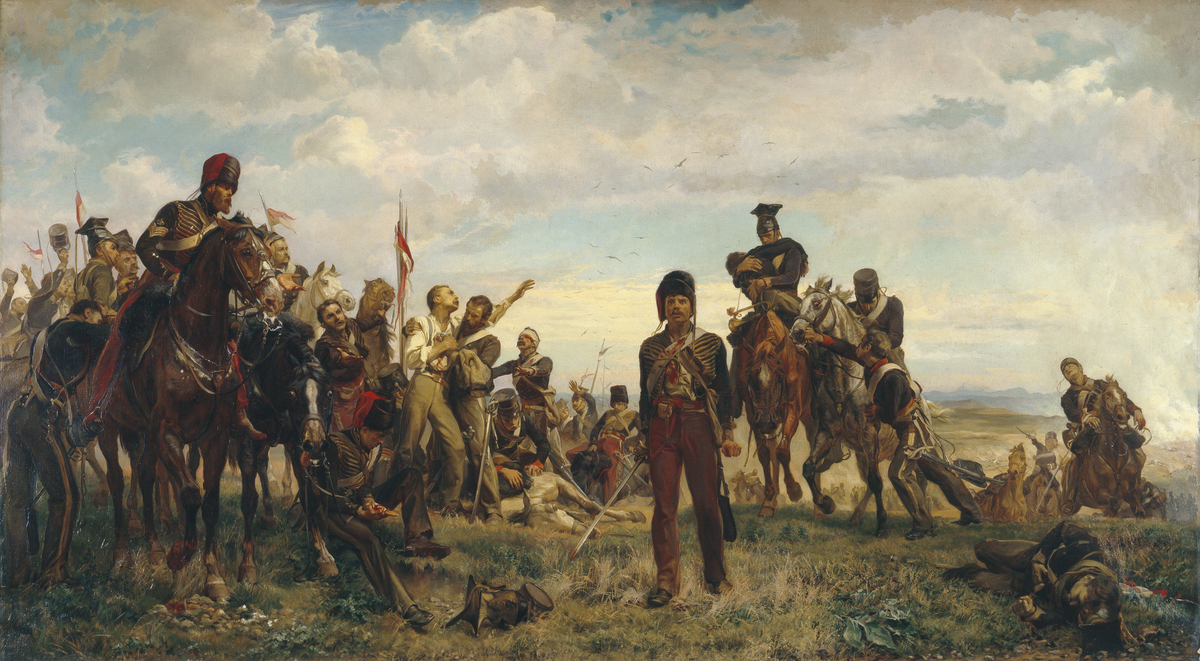Balaclava
Elizabeth Southerden Butler 1846 - 1933
Summary
Battle scene at Balaclava, depicting the return of survivors of the charge of the Light Brigade. Soldiers on horseback and on foot make their way up a hill, towards the viewer, in various states of injury, some still carrying standards. In the foreground, centre, a soldier stands gazing into the distance, an expression of shock on his face, carrying a bloodied sword in his right hand. On the left, mounted survivors and men on foot are gathered together, some of the wounded being helped along. More soldiers make their way up the hill on the right. To the right of the central figure, a mounted soldier rides forward carrying an injured trumpeter in his arms. The distressed horse of the wounded rider next to him is lead forward by a man on foot. In the right corner, a soldier lies on the ground, badly wounded. Plumes of smoke rise in the distance.
Display Label
Gallery text panel Life and Landscape High-Victorian Social and Rural Subjects The Pre-Raphaelite interest in modern life was paralleled by a more general demand for contemporary subjects. The Victorians' fascination with their growing world of new social types and changing patterns of behaviour is particularly echoed in their love of crowd scenes. Some artists tried to highlight the darker side of society by focusing on the plight of the less well off. Yet representations of the working class and unemployed are usually idealised or softened by sentimental treatment. The wealthier classes provided more popular themes in art: high society is often both celebrated and analysed in paintings of domestic interiors and social engagements. Depictions of the city and industrial activity are rare. In an age of urban degradation and mass poverty collectors sought escapism more than social reflection, which gave rise to an unparalleled market for landscapes. Typically extreme in evoking serenity or bleakness, their appeal often revolves around open-ended narratives and the presence or suggestion of human activity.
Object Name
Balaclava
Creators Name
Date Created
1876
Dimensions
Canvas: 103.4cm x 187.5cm
Frame: 148.5cm x 232.5cm
accession number
1898.13
Place of creation
England
Support
canvas
Medium
oil paint
Legal
© Manchester Art Gallery

